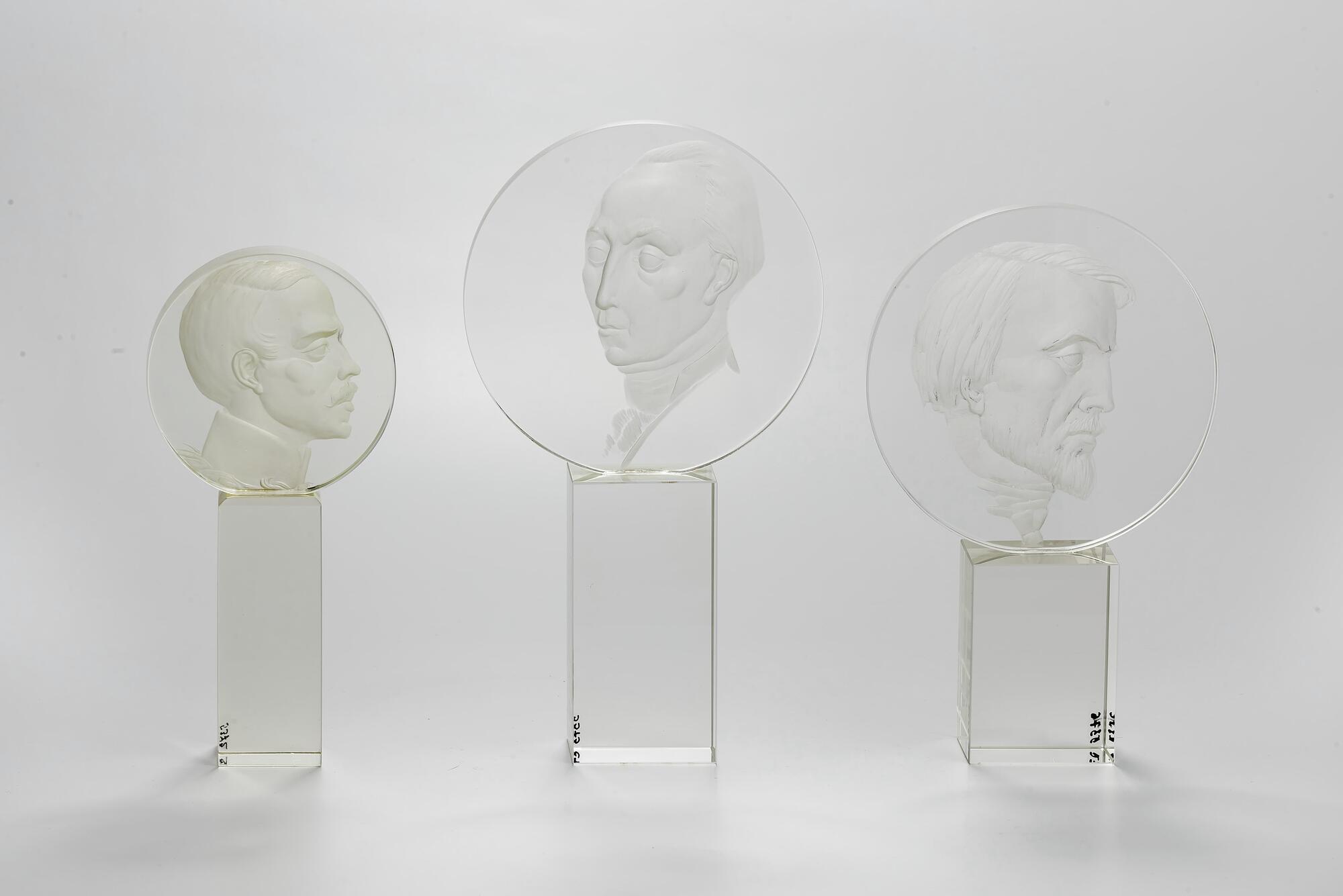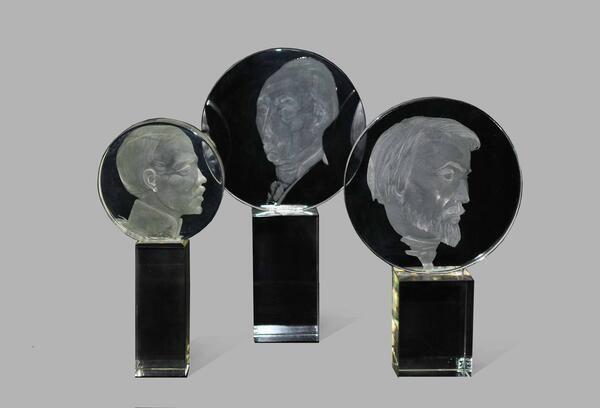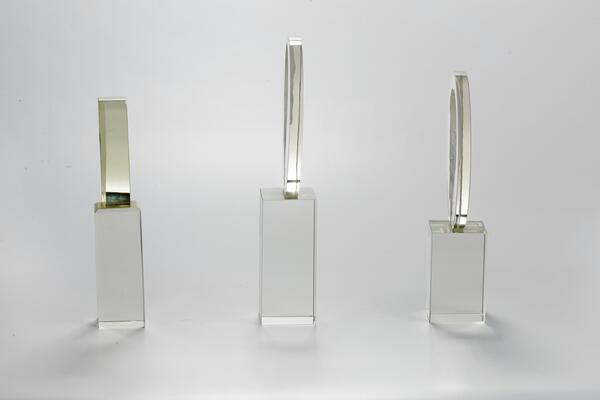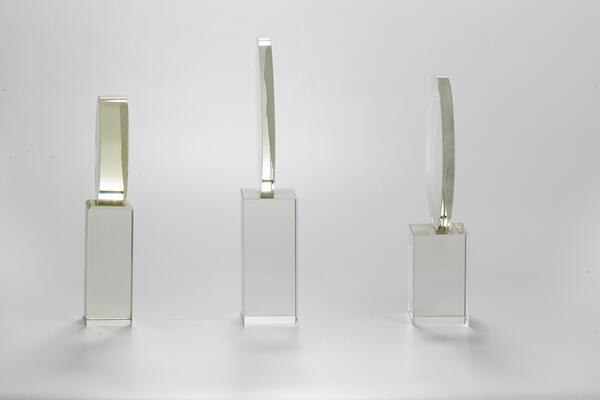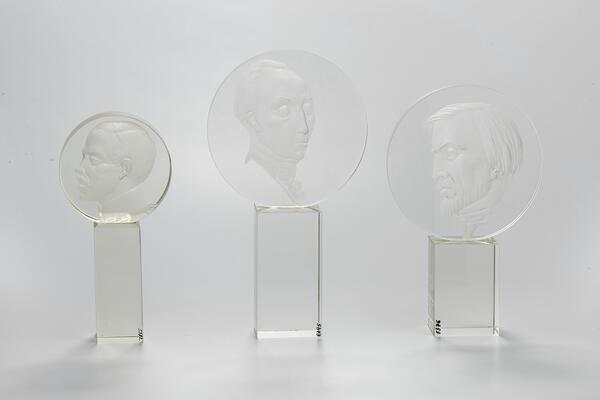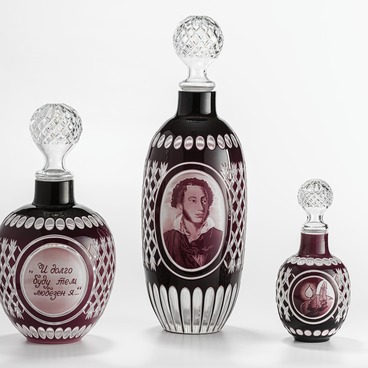These engraved portraits of Mikhail Lermontov, Alexander Radishchev and Vissarion Belinsky are made in matte engraving technique on a smooth background. Round discs of transparent optical glass make the work look complete and deep. Engraved glass is one of the most refined forms of glass art. Czech artisans were the ones who developed this unique technique.
Since the 17th century, engraving became common in Western Europe. The 18th century, when the interest in the portrait genre was at its peak, was the heyday of engraving in Russia. At that time, there were many personal ceremonial goblets addressed to the rulers, the nobility and prominent public figures. In the middle of the 20th century, the artisans again address the portrait genre performed on glass.
The revival of this genre in Russian glassmaking owes a lot to Alexander Fokin. He confesses that he fell in love with the art of portraiture from the very beginning and this fact left no other choice as far as his creative career was concerned.
Alexander Fokin is a graduate of the Penza Art College named after K.A. Savitsky and the Department of Artistic Ceramics and Glass of the Leningrad Higher Art and Industrial School named after V.I. Mukhina (his diploma supervisor was Alexander Ivanov).
In 1987–1997, he worked as the chief artist of the Nikolsky glass factory. Since 1984, he has been an active participant in regional and all-Russia exhibitions. His solo exhibitions were held in different years in Penza, Samara, Moscow, Togliatti, St. Petersburg, Nikolsk, Kaluga and Panevezhis.
Now Fokin works in his own workshop. His name is well known in many countries, especially in the Czech Republic, where the artist regularly takes part in the International Engraved Glass Symposia in the town of Kamenický Šenov. Fokin’s works are kept in private foreign collections and well-known museums in Russia, in particular Kaliningrad and Nikolsk, as well as in the Penza Art Gallery.
The presented works were included in a series of portraits created to commemorate the 200th anniversary of the Penza Governorate and received the Governor’s Prize for achievements in the field of art. Experts note the careful study of facial features, the harmonious gradation of light and shadow, the well-balanced contrast of matte and transparent details, the remarkable technical achievements and the subtle psychological expressiveness of the images. The artist himself notes that the traditions of his homeland — “a wonderful glass region” — are very important to him.
Since the 17th century, engraving became common in Western Europe. The 18th century, when the interest in the portrait genre was at its peak, was the heyday of engraving in Russia. At that time, there were many personal ceremonial goblets addressed to the rulers, the nobility and prominent public figures. In the middle of the 20th century, the artisans again address the portrait genre performed on glass.
The revival of this genre in Russian glassmaking owes a lot to Alexander Fokin. He confesses that he fell in love with the art of portraiture from the very beginning and this fact left no other choice as far as his creative career was concerned.
Alexander Fokin is a graduate of the Penza Art College named after K.A. Savitsky and the Department of Artistic Ceramics and Glass of the Leningrad Higher Art and Industrial School named after V.I. Mukhina (his diploma supervisor was Alexander Ivanov).
In 1987–1997, he worked as the chief artist of the Nikolsky glass factory. Since 1984, he has been an active participant in regional and all-Russia exhibitions. His solo exhibitions were held in different years in Penza, Samara, Moscow, Togliatti, St. Petersburg, Nikolsk, Kaluga and Panevezhis.
Now Fokin works in his own workshop. His name is well known in many countries, especially in the Czech Republic, where the artist regularly takes part in the International Engraved Glass Symposia in the town of Kamenický Šenov. Fokin’s works are kept in private foreign collections and well-known museums in Russia, in particular Kaliningrad and Nikolsk, as well as in the Penza Art Gallery.
The presented works were included in a series of portraits created to commemorate the 200th anniversary of the Penza Governorate and received the Governor’s Prize for achievements in the field of art. Experts note the careful study of facial features, the harmonious gradation of light and shadow, the well-balanced contrast of matte and transparent details, the remarkable technical achievements and the subtle psychological expressiveness of the images. The artist himself notes that the traditions of his homeland — “a wonderful glass region” — are very important to him.
